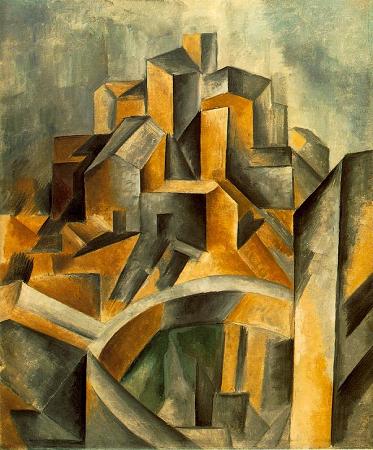Pablo Picasso (1881 - 1973). Pablo Ruiz Picasso was a Spanish painter, sculptor, printmaker, ceramicist, stage designer, poet and playwright who spent most of his adult life in France. Regarded as one of the most influential artists of the 20th century, he is known for co-founding the Cubist movement, the invention of constructed sculpture, the co-invention of collage, and for the wide variety of styles that he helped develop and explore. Among his most famous works are the proto-Cubist Les Demoiselles d'Avignon, and Guernica, a dramatic portrayal of the bombing of Guernica by the German and Italian airforces during the Spanish Civil War. Picasso demonstrated extraordinary artistic talent in his early years, painting in a naturalistic manner through his childhood and adolescence. During the first decade of the 20th century, his style changed as he experimented with different theories, techniques, and ideas. After 1906, the Fauvist work of the slightly older artist Henri Matisse motivated Picasso to explore more radical styles, beginning a fruitful rivalry between the two artists, who subsequently were often paired by critics as the leaders of modern art. Picasso's work is often categorized into periods. While the names of many of his later periods are debated, the most commonly accepted periods in his work are the Blue Period, the Rose Period, the African-influenced Period, Analytic Cubism, and Synthetic Cubism, also referred to as the Crystal period. Much of Picasso's work of the late 1910s and early 1920s is in a neoclassical style, and his work in the mid-1920s often has characteristics of Surrealism. His later work often combines elements of his earlier styles. Exceptionally prolific throughout the course of his long life, Picasso achieved universal renown and immense fortune for his revolutionary artistic accomplishments, and became one of the best-known figures in 20th-century art. Picasso was baptized Pablo Diego Jose Francisco de Paula Juan Nepomuceno Maria de los Remedios Cipriano de la Santisima Trinidad Ruiz y Picasso, a series of names honouring various saints and relatives. Ruiz y Picasso were included for his father and mother, respectively, as per Spanish tradition. Born in the city of Malaga in the Andalusian region of Spain, he was the first child of Don Jose Ruiz y Blasco and Maria Picasso y Lopez. Though baptized a Catholic, Picasso would later become an atheist. The surname Picasso comes from Liguria, a coastal region of north-western Italy; its capital is Genoa. There was a painter from the area named Matteo Picasso, born in Recco, of late neoclassical style portraiture, though investigations have not definitively determined his kinship with the branch of ancestors related to Pablo Picasso. The direct branch from Sori, Liguria, can be traced back to Tommaso Picasso. His son Giovanni Battista, married to Isabella Musante, was Pablo's great-great-grandfather. Of this marriage was born Tommaso. Pablo's maternal great-grandfather, Tommaso Picasso moved to Spain around 1807. Picasso's family was of middle-class background. His father was a painter who specialized in naturalistic depictions of birds and other game. For most of his life Ruiz was a professor of art at the School of Crafts and a curator of a local museum. Ruiz's ancestors were minor aristocrats. Picasso showed a passion and a skill for drawing from an early age. According to his mother, his first words were piz, piz, a shortening of lopiz, the Spanish word for pencil. From the age of seven, Picasso received formal artistic training from his father in figure drawing and oil painting. Ruiz was a traditional academic artist and instructor, who believed that proper training required disciplined copying of the masters, and drawing the human body from plaster casts and live models. His son became preoccupied with art to the detriment of his classwork. The family moved to A Coruna in 1891, where his father became a professor at the School of Fine Arts. They stayed almost four years. On one occasion, the father found his son painting over his unfinished sketch of a pigeon. Observing the precision of his son's technique, an apocryphal story relates, Ruiz felt that the thirteen-year-old Picasso had surpassed him, and vowed to give up painting, though paintings by him exist from later years. In 1895, Picasso was traumatized when his seven-year-old sister, Conchita, died of diphtheria. After her death, the family moved to Barcelona, where Ruiz took a position at its School of Fine Arts. Picasso thrived in the city, regarding it in times of sadness or nostalgia as his true home. Ruiz persuaded the officials at the academy to allow his son to take an entrance exam for the advanced class.
more...














